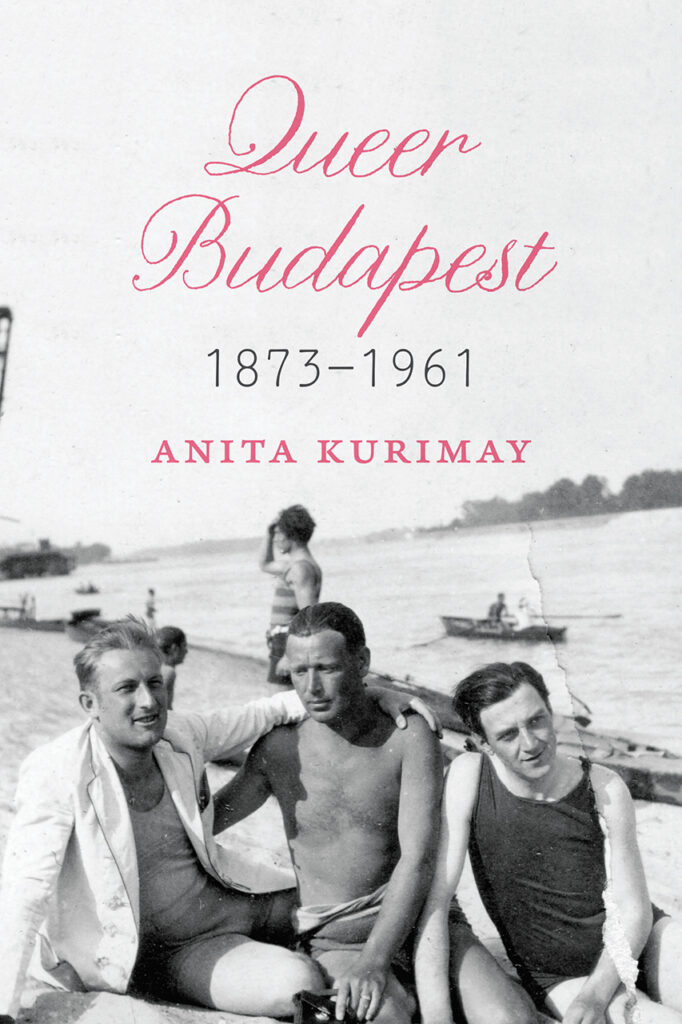2020 Hans Rosenberg Book Prize
The Central European History Society is proud to announce the winner of the Hans Rosenberg Book Prize, awarded to the best book in the field published by a North American resident in 2020.
Anita Kurimay, Queer Budapest, 1873-1961 (University of Chicago Press, 2020)
Among the greatest challenges that we historians encounter in our research are the silences. These come to us in many forms: unspeakable secrets, unquestioned assumptions, quiet existences that left little trace, evidence destroyed by human and natural disasters, and stories deliberately erased to political ends. Through a tour de force of methodological dexterity and ingenuity, Anita Kurimay boldly enters into these silences. In doing so, she not only recovers the forgotten and denied history of Queer Budapest but also reconstructs the surrounding and interconnected topographies of sexuality from the provinces to the metropoles. The result is more than a compelling case study of a city. It is, at heart, a Central European history.

Kurimay shifts fluently across frames of analysis, from the urban panorama to the intimate close-up of family scandal. Along the way, she marshals a sweeping breadth and variety of sources. As one telling example, the Budapest Metropolitan Police’s “homosexual registry” persisted in use from the 1880s until decriminalization in 1961 but did not survive in the archival record. To show its meaning and purpose, Kurimay traces references and resonances within medical literature, police publications, and the burgeoning popular press. Expanding outward from the Hungarian context, she demonstrates the embeddedness of the registry and other policing tools within transnational discourse on non-normative sexualities shaped by latest theories of Viennese psychiatrists and Berlin sexologists, borrowed legal codes and criminological techniques, the reverberations of causes célèbres like the Oscar Wilde trial, and the lucrative investigations of “sinful Budapest” that echoed journalism in other European capitals. This is one of many examples of how Kurimay adeptly fills in the puzzle from the margins to the missing pieces.
With this wide-angled lens, Kurimay also captures the vitality of a city on the rise and its fin de siècle places of pleasure—riverfront promenades, taverns, and thermal bathhouses. The significance of such sites for male homosexual subcultures will be familiar to readers of comparable works on Paris, New York, or Berlin. As a striking contribution, Kurimay shows us how the private spaces of women also constituted Queer Budapest. A sensational interwar divorce trial, which turned on accusations of a lesbian affair, stimulates the book’s compelling exploration of normative gender ideals and its contemplation of a wide variety of queer experiences. Servant testimony provides a rare glimpse of how views filtered among classes and across the urban-rural divide. And, given the status of the accused as two of the era’s most prominent conservative women, the case upends expectations.
Indeed, the book resists easy assumptions about the relationship between politics and sexuality as it spans eighty years and a spectrum of government regimes. Across purported contrasts and ruptures, the reader finds continuity, surprise, and paradox. Nineteenth-century liberal officials embraced greater regulation of sexuality as a mark of urban modernity and affinity with Western Europe. Yet, while surveillance grew, prosecutions and prison sentences remained few. Public silence created unexpected spaces for queer subcultures to flourish. Tacit toleration of men’s varied sexual practices (if not varied gender expressions) continued into the conservative Horthy era, despite and even because of the sharp crackdown on female sexuality. While the fascist Arrow Cross planned horrors, it was only post-World War II stabilization that enabled the Communist dictatorship to pursue systematic state persecution. Viewing the period as a whole, diverse governments shared assumptions, policies, and a tendency to destroy problematic records.
Kurimay concludes with the anti-LGBTQ backlash that has followed the burst of optimism and progress after 1989. Rightwing parties have denounced queer identities as a product of capitalism and Western influence and without authentic Hungarian roots. Few scholars have ventured into the silences, both old and new. Yet the final chapter reminds us that there is no safe, predictable arc of history. And this makes works like Queer Budapest, courageously investigated and powerfully told, all the more important.
CEHS thanks the prize committee:
Molly Loberg
Heidi Tworek
Janek Wasserman